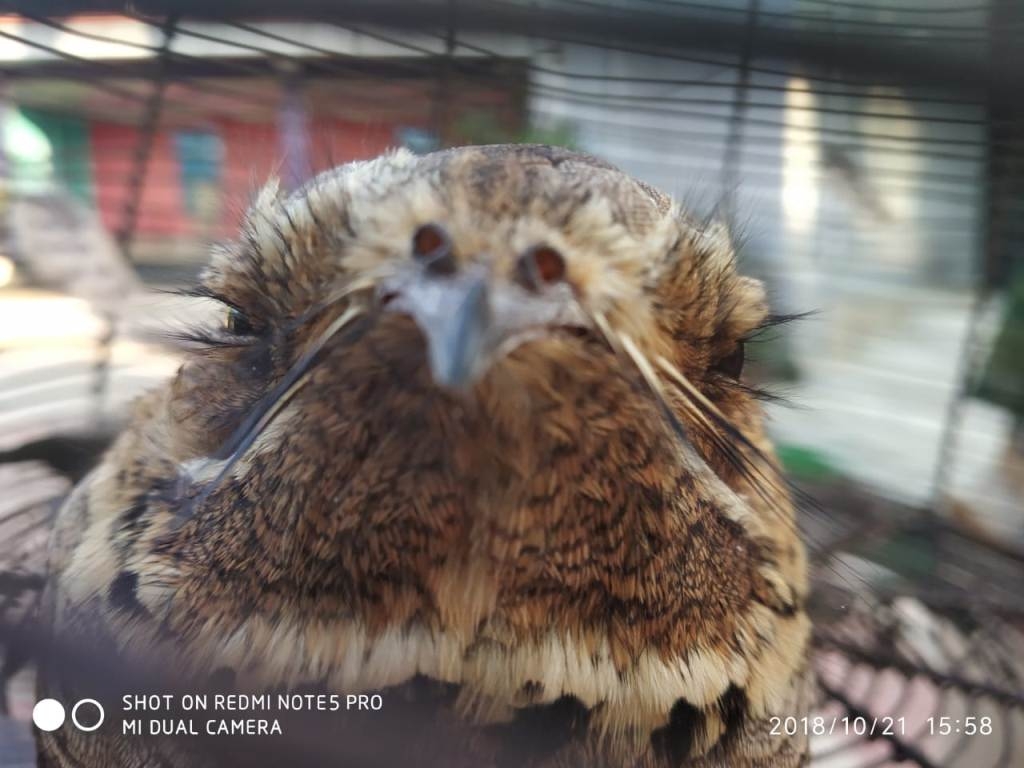
IT News
Thoubal, Oct.22,
Staffs of Kakching Range office today rescued a very rare and beautiful migratory bird with whiskers just like those seen on the cats.
The bird was spotted and caught by M Inakhunbi Devi, Ex- Chairperson, Kakching Municipal Corporation while the bird was about to be eaten by a dog. Onlookers were really fascinated at the sight of such a beautiful and rare bird with whiskers which are the natural inhabitant of Australia and New Guinea of the Southern Hemisphere in our State Manipur.
Australian Owlet-nightjars (Aegotheles cristatus) are medium sized with 8 to 10 inches in length. They usually nest in cavities of tree and below of the nests are lined with green leaves but owlet nightjar are very intelligent and hence to avoid from harmful insects, they used leaves with insecticide power like Eucalyptus leaves etc. In one season, a pair gives 3-4 eggs and after incubation by both sexes for about 25-27 days it hatches. The parent takes care of the young ones only for about a month.
The Australian Owlet-nightjar is hardly counted during the last many bird census in Manipur but luckily as the onset of this year’s season for the migratory birds, the presence and joining of this beautiful migratory birds in Manipur is a good sign for a bright year for our winged visitors who do not have political boundaries.
Most of the migratory birds in our state are of from Northern Hemisphere like Siberia etc. but we are lucky by the arrival of the owlet nightjar from Australia which proves the latitudinal migration to our state.
The most attractive part of the owlet nightjar is the stout like feathers called Whiskers on the face pointed downward on both sides of the beak.
These small nocturnal birds are widespread across the Australian mainland, New Guinea and also found in Tasmania. They are common in suitable habitat, especially woodlands where there are suitable tree hollows in which to spend the day roosting. Also holes in embankments and cliff faces may be used. In winter they often sun themselves at the entrance of their roosting hole.
Finding them at night with a light is almost impossible for unlike most nocturnal animals which have large light reflecting eyes, Owlet-nightjars, while they do have large eyes, do not reflect light at all.



